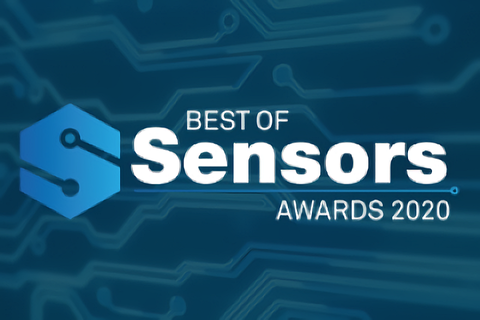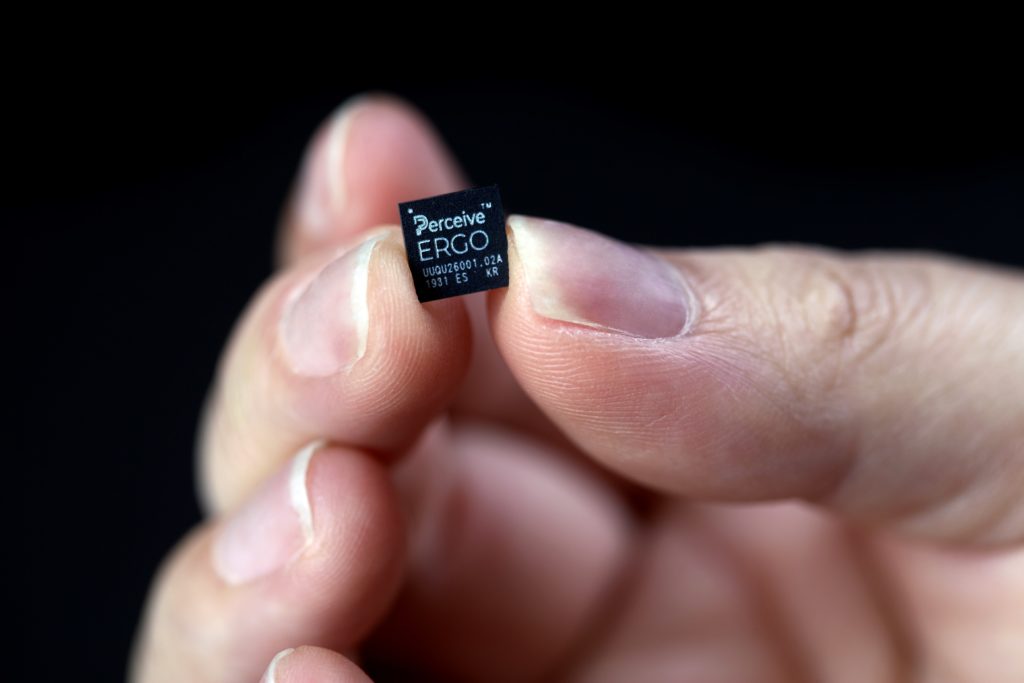By Sensors Staff 2020-11-16
Source: https://www.fierceelectronics.com/sensors/perceive-named-best-sensors-2020-startup-year

In March 2020, Perceive Corporation launched out of Experi and on the same day introduced its first product, Ergo, an edge inference processor. Ergo’s primary value: it can work next to a sensor in a small consumer device like a smart home application to provide AI inferencing instead of sending that sensor data to the cloud for analysis. In effect, Ergo created a smart sensor.
The company says the chip can offer data center-class accuracy using low power in an edge device, offering the ability to enhance data security and user privacy. The chip is designed to offer a more efficient way of using neural networks. It can run full YOLOv3 object detection at 30 frames per second while consuming 20 milliwatts. Physically, the chip is a mere 7x7mm and doesn’t require external memory.

Perceive enables device makers to deliver smarter products that understand their environment and respond intelligently by sitting next to and directly connecting with sensors within a device, which upgrades the regular sensor to a smart sensor. With its high levels of processing power and efficiency, Ergo can convert the sensory data gathered by the sensor into meaningful insights and contextual understanding. Paired with sensors, the company says that the chip strikes the ideal balance between low latency and intuitive features, vastly improving the world of connected consumer products and unlocking brand new capabilities.
What’s particularly unique about Perceive, the company, is its novel approach to machine learning—one that has fundamentally redefined how sensory information is processed at the edge. Until now, edge pioneers have struggled to mitigate a growing divergence between the limited capabilities of edge inference processors and the rising complexity of the most advanced neural networks.
While most edge solutions use an array of MACs and external DRAM to process deep neural networks, Ergo achieves its breakthrough efficiency without using either. Founder and CEO Steve Teig used information theory to reinvent the mathematics of neural networks with a focus on highly-efficient execution. He identified the aspects of a neural network crucial for achieving predictiveness and, in turn, developed a new way to represent the networks themselves. Today, Ergo leverages this approach to neural network processing to achieve its high levels of performance and accuracy at very low power, alongside sensors.
That novel approach to DNN processing allows Ergo to run a broad range of neural network types—CNNs, RNNs, LSTMs, GRUs and more—`including advanced neural networks, such as full YOLOv3, M2Det and others, which until now could run only in data centers. In fact, the chip is capable of running full YOLOv3 at up to 246 frames per second, or processing video and audio data at the same time with multiple heterogeneous neural networks running simultaneously.
Perceive is working with leading consumer device makers on next-gen products, which could be security devices or smart home appliances. “Your next oven could offer smart sensors with Ergo to bake a turkey to perfection,” said Judge Matt Hamblen, Editor of FierceElectronics. “Because of the billions of devices that stand to benefit from Ergo and its unusual design, Perceive merits the Sensors Startup of the Year award.”
